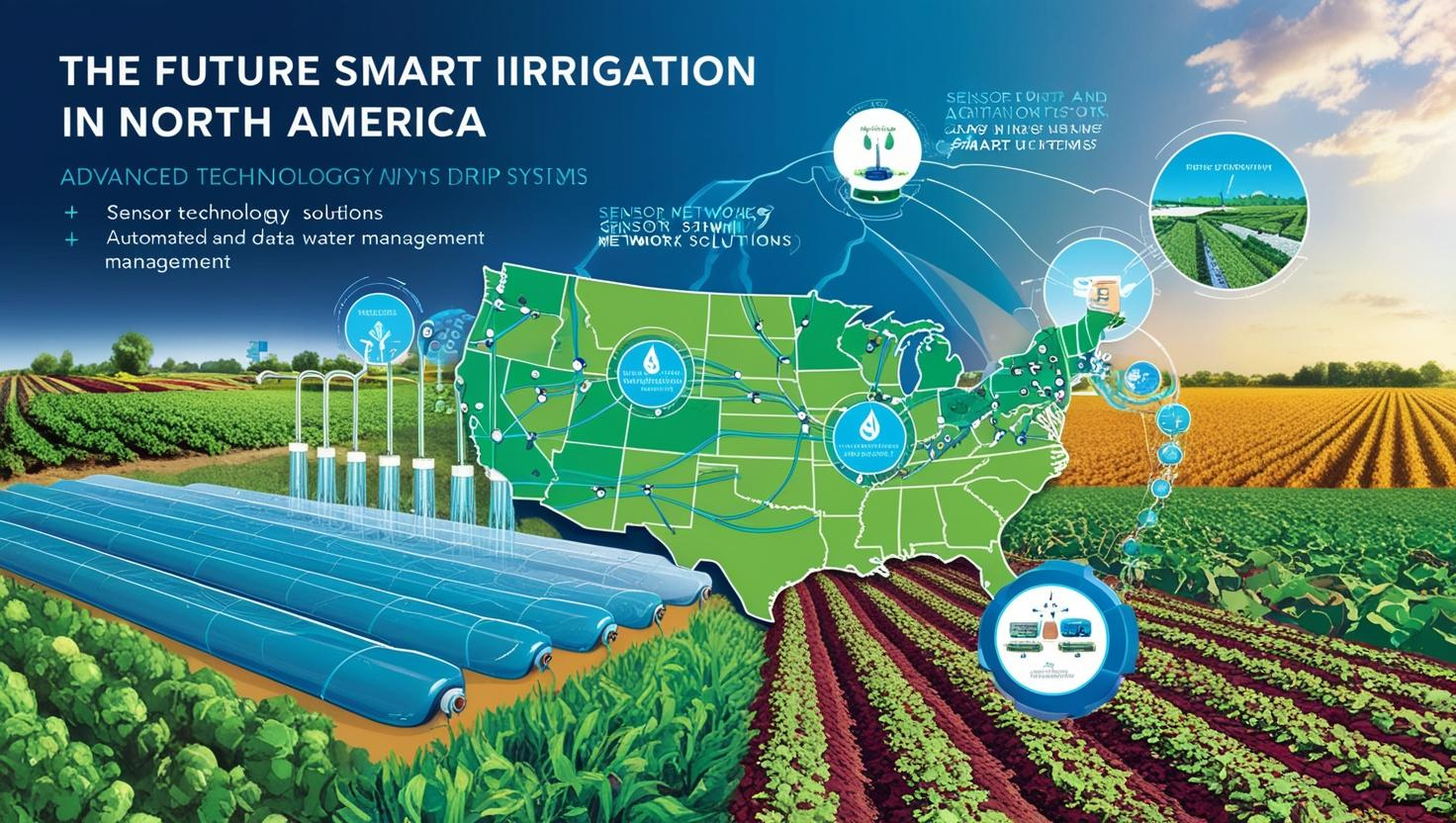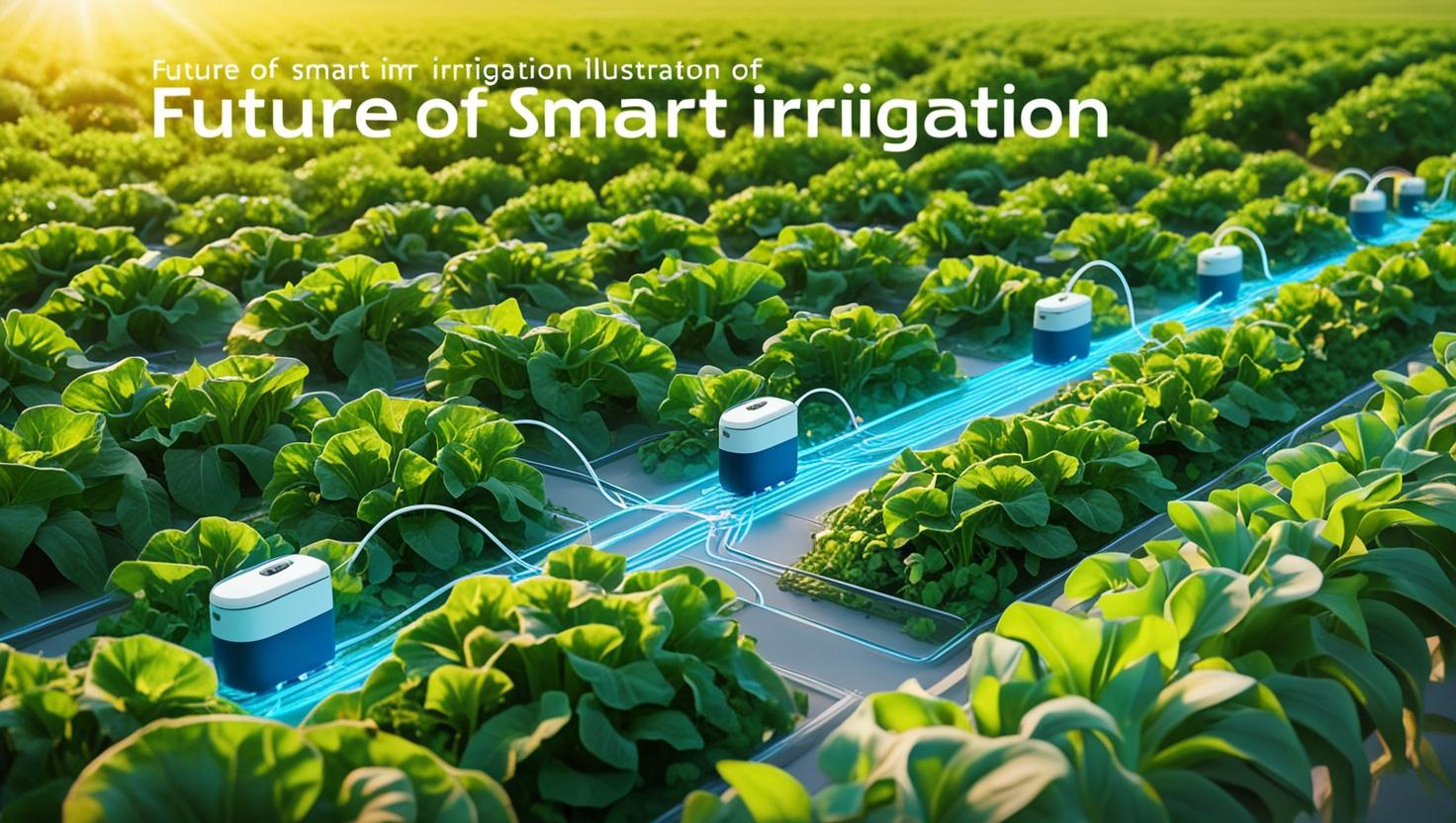Water Conservation and Smart Irrigation: The Future of Farming in North America
The agricultural sector in North America is undergoing a significant transformation, driven by the increasing adoption of smart irrigation systems. With climate change, water scarcity, and the need for sustainable farming practices, the demand for efficient water management solutions is on the rise. Smart irrigation technology, powered by IoT, AI, and automation, is playing a crucial role in optimizing water usage, reducing wastage, and improving crop yields. The future of the smart irrigation market in North America looks promising, with technological advancements, policy support, and growing awareness among farmers fueling its expansion.
Growing Demand for Water Conservation
Water conservation has become a top priority for farmers and policymakers in North America. With fluctuating climate patterns and prolonged drought conditions in certain regions, efficient water management is essential for sustaining agricultural productivity. Traditional irrigation methods often lead to excessive water consumption, resulting in resource depletion and increased operational costs. Smart irrigation systems address this challenge by utilizing real-time data, weather forecasts, and soil moisture sensors to optimize water distribution, ensuring that crops receive the right amount of water at the right time.
Download PDF Brochure for Info @ https://www.marketsandmarkets.com/pdfdownloadNew.asp?id=199758913

Technological Advancements Driving Market Growth
The integration of cutting-edge technologies such as IoT, AI, and cloud computing is revolutionizing smart irrigation systems. IoT-enabled sensors collect and transmit data on soil moisture, humidity, and temperature, allowing farmers to make data-driven decisions. AI-powered analytics provide predictive insights, helping to anticipate water requirements and detect potential issues before they impact crop health. Cloud-based platforms enable remote monitoring and control, offering farmers greater flexibility in managing irrigation schedules. These advancements are making smart irrigation more accessible and efficient, driving its adoption across North America.
Government Policies and Incentives
Government initiatives and policies are playing a crucial role in promoting smart irrigation adoption in North America. Various state and federal programs offer incentives, subsidies, and grants to encourage farmers to invest in sustainable water management solutions. In the United States, the Department of Agriculture and the Environmental Protection Agency have introduced programs that support precision irrigation practices. Canada has also implemented policies aimed at promoting efficient water usage in agriculture. These regulatory efforts are expected to accelerate the growth of the smart irrigation market by making advanced irrigation solutions more affordable and attractive to farmers.
Increasing Adoption in Commercial and Residential Sectors
While agriculture remains the primary sector driving smart irrigation adoption, commercial and residential applications are also contributing to market growth. Landscaping companies, golf courses, and public parks are increasingly implementing smart irrigation systems to maintain green spaces efficiently while conserving water. Homeowners are also adopting smart irrigation solutions, integrating them with smart home systems to automate lawn watering based on weather conditions and soil moisture levels. This expanding market scope beyond traditional farming is further boosting the demand for smart irrigation technology in North America.

Challenges in Market Expansion
Despite its promising growth prospects, the smart irrigation market in North America faces certain challenges. High initial costs associated with smart irrigation systems can be a deterrent for small and medium-sized farmers. Additionally, a lack of awareness and technical expertise can hinder adoption, especially in rural areas where traditional irrigation methods are deeply ingrained. Connectivity issues in remote locations also pose a challenge, as smart irrigation systems rely on real-time data transmission for optimal performance. Addressing these challenges through education, financial assistance, and improved infrastructure will be crucial for sustained market growth.
Future Outlook and Market Potential
The future of the smart irrigation market in North America looks highly optimistic, with continuous technological advancements, increasing awareness, and supportive government policies driving its expansion. As sustainability becomes a priority, more farmers and businesses are expected to embrace smart irrigation systems to enhance efficiency and reduce environmental impact. Innovations such as AI-driven automation, real-time data analytics, and integration with smart farming solutions will further enhance the capabilities of smart irrigation, making it an essential component of modern agriculture.
With an increasing focus on precision agriculture and sustainable water management, the smart irrigation market in North America is poised for substantial growth in the coming years. By addressing challenges and leveraging technological advancements, the industry can create a future where water resources are utilized efficiently, ensuring long-term agricultural productivity and environmental sustainability.
80% of the Forbes Global 2000 B2B companies rely on MarketsandMarkets to identify growth opportunities in emerging technologies and use cases that will have a positive revenue impact.
- Leading Automated Guided Vehicle Companies 2024: An In-depth Analysis
- CHARGED UP: SHIFT TO E-MOBILITY AND THE EVOLUTION OF TRANSPORTATION
- Global Automotive Market: Predictions For 2024
- Revolutionizing Depot Charging: Hockey Stick Growth on the Cards
- The Future of Silicon Battery Industry: Innovations and Market Outlook


